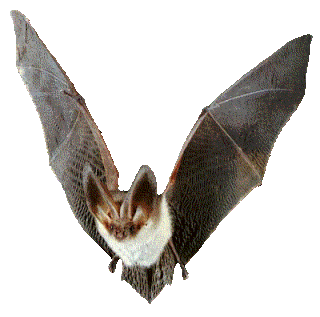How do you know what to listen to? In the middle of a noisy party, how does a mother suddenly focus on a child's cry, even if it isn't her own?
Bridget Queenan, a doctoral candidate in neuroscience at Georgetown University Medical Center is turning to mustached bats to help her solve this puzzle.
At the annual meeting of the Society for Neuroscience in San Diego, Queenan reports that she has found neurons in the brains of bats that seem to "shush" other neurons when relevant communications sounds come in -- a process she suggests may be working in humans as well.
In her investigations, she has also found that "some neurons seemed to know to yell louder to report communication sounds over the presence of background noise."
"So we can now start to piece together how the cells in your brain are able to deal with the complex sensory environment we live in," Queenan added.
To understand auditory brain function, bats are especially interesting animals to study because they process sound through echolocation, which is a kind of biological sonar. Bats call out and then listen to their own echoes produced when those calls bounce off nearby objects. Bats use these echoes to navigate and to hunt.
Not only do the brains of bats have to process a constant stream of pulses and echoes, they have to simultaneously process the bats' social communication, Queenan says.
"What we are trying to figure out is how a bat can fly around echolocating -- screeching and listening to its own individual sounds bouncing back -- amidst a whole colony of hundreds of other echolocating bats -- and possibly hear another bat saying 'watch out! Bats actually do make these cautious calls quite a bit," she says. "In fact, bats have a whole host of communication sounds: angry sounds, warning sounds, and sounds that says 'please don't hurt me."
The auditory processing area in bats' brains is larger than other centers, just like the visual processing center in humans is large. "Humans operate predominantly by sight so a huge portion of our brain is devoted to vision processing. Bats, however, operate by sound," Queenan says.
In this study, Queenan and her colleagues presented different combinations of echolocation sounds with various communication sounds to awake bats to see how neurons in the bat brains were dealing with this incredible cacophony. The researchers found that some bats' neurons control the activity of other neurons when important sounds are perceived. These GUMC scientists also found other neurons that amp up perception of bat communication in the face of background noise. Working together, these clumps of neurons allow the bats to hear what is needed.
"All organisms are constantly assaulted by incoming stimuli such as sounds, light, vibrations, and so on, and our sensory systems have to triage the most relevant stimuli to help us survive," Queenan says. "As humans we are not only sensitive to a child's cry, but we notice flashing ambulance lights even though we are engrossed in something else. We want to know how that happens."
Queenan says her next task is to record brain neurons in bats that are not only awake, but flying.




No comments:
Post a Comment